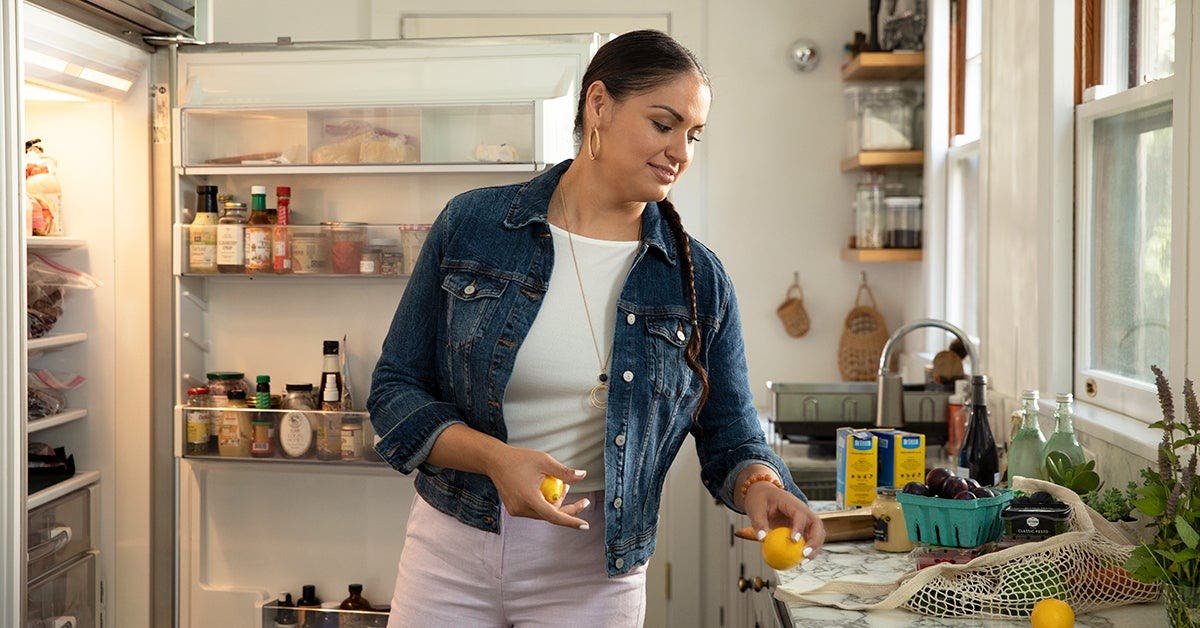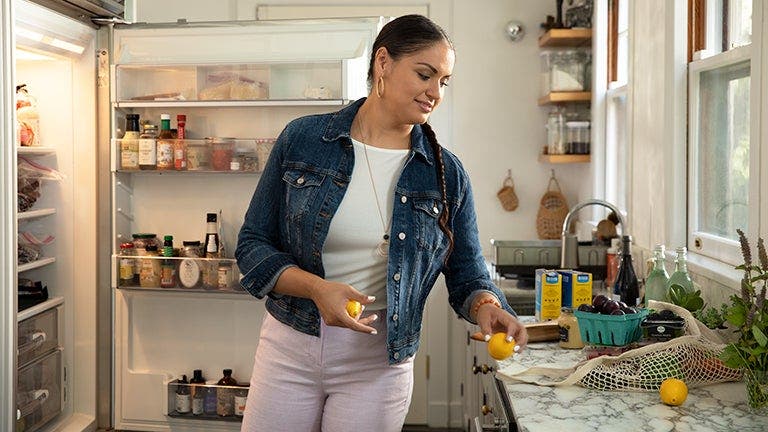The Ultimate Guide to Creating a Safe Kitchen
Use this as your playbook for organizing a clean and accident-free cooking space.
Published May 9, 2018


When you’re setting up your kitchen you know it’s important to stock it with the right foods. But there’s another key to kitchen success that might not be on your radar: Keeping it safe and healthy. After all, it doesn’t matter how flawless your meals are if they make you sick or if you get hurt while you’re preparing them.
RELATED: How to Stock a Healthy Pantry
If you aren’t quite sure where to begin, these DIY tips can help you map out a hazard-free space.
Focus #1: Begin with a clean slate
- Lather up: The first step to a safe kitchen starts with your hands, which are a breeding ground for microbes. Wash them with plenty of soap and warm water for a minimum of 20 seconds every time you cook and after you handle meat, eggs, or poultry.
- Scrub those counters: Wet, sticky kitchen counters can be downright germy. Keep them squeaky clean by wiping up spills ASAP with paper towels and hot, soapy water. Cloth or microfiber towels work too. Just be sure to launder them in hot water and detergent after each use.
- Give your sponge some love: The typical kitchen sponge is home to some 360 kinds of bacteria. Luckily, popping it in the microwave for a minute or in the dishwasher kills 99.9 percent of them. For extra protection, replace your sponge every couple of weeks.
- Don’t forget the fridge: The grimiest part of your kitchen isn’t your stove or countertops. It’s your refrigerator’s veggie drawer. It’s so germy that one study found that 36 percent of crispers harbored salmonella (ditto for meat compartments). Banish these bacteria by cleaning your fridge at least once a month (or anytime you spot oozing, leaking food) with a solution of warm water and mild detergent.
Focus #2: Prep safely
- Invest in two cutting boards: Use one for produce and another for raw meat, poultry, and seafood to ensure that bacteria from protein foods can’t contaminate your fruits and veggies.
- Give produce a bath: Rinse all fruits and vegetables in a colander to keep them free from any bacteria that could be hanging out in your kitchen sink. What about chicken? Contrary to what you might have heard, you should never rinse raw poultry as this can spread salmonella onto other surfaces such as utensils, countertops and cutting boards.
- Thaw it right: Grandma might have defrosted her chicken on the kitchen counter, but you shouldn’t. Why? Thawing frozen meat, poultry and seafood encourages microbes to multiply like crazy. Defrost your bird (or steak) in a covered dish on the lowest shelf in your fridge instead.
- Cook by the numbers: It’s tempting to eyeball a chicken breast or burger to determine if it’s done. But insufficiently cooked meat and poultry can be laced with bacteria. Instead use a food thermometer to make sure these proteins have reached the proper cooking temps.
- Refrigerate it fast: Cooling leftovers on the kitchen counter before refrigerating them creates a playground for bacteria. Pack up leftovers right after meals and pop them into the fridge promptly for safer cooling.
Focus #3: Avert accidents
- Mark a perimeter: Ranges and stovetops account for 60 percent of home fires involving cooking equipment. Keep kids safe by designating a child-free zone three feet around the kitchen stove.
- Unplug it: Prevent turning on blenders, coffee makers, and the like inadvertently by unplugging all appliances whenever you’re not using them.
- Prevent spills: Turning pot handles toward the inside of the stove helps ensure that they don’t get knocked over. For every day spills, like milk, water and coffee, keep a dishtowel handy to mop up puddles.
- Don’t neglect your knives: Dull knives are more likely to slip and cut you instead of the food. Invest in a knife sharpener as well as a knife rack for safe storage.
- Get the right gear: A dustpan and broom are your best friends for cleaning up broken glass and dishes. Another must: A step stool. It’s a lot safer than climbing onto a chair (or the counter) to reach your favorite platter from a tall kitchen cabinet.
- Be prepared: In the event that an accident does happen, be ready to nip it in the bud with a fire extinguisher and a first aid kit.
